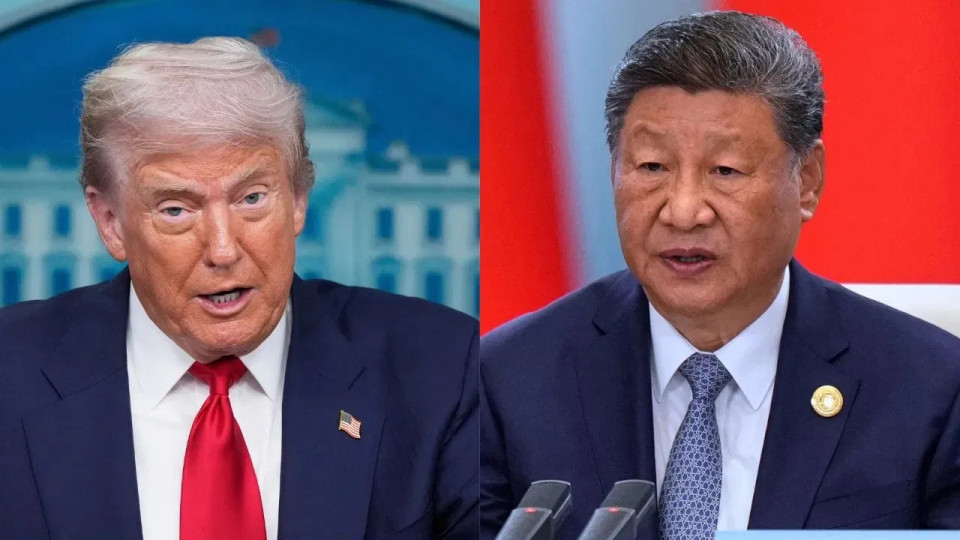
Trump’s Tough Call Breaks China’s Backbone (X)
Trump's Tariff Policy: The impact of US President Donald Trump's tariff policy is now clearly visible on China's economy. The pace of the world's second-largest economy is slowing down. China's GDP growth rate declined to 4.8 percent in the July to September quarter, which is the lowest level in the last year. This has raised questions about the stability of China's development model and exposed the weaknesses of its economic structure.
According to the report, weak domestic demand and excessive dependence on exports have now become major challenges for Chinese policymakers. The economy grew 1.1 percent on a quarterly basis, slightly above estimates, while the annual growth rate from January to September was 5.2 percent. This indicates that China is still moving towards achieving its 5 percent annual target.
Retail sales grew by only 3 percent in September, which is the lowest level in the last ten months. At the same time, real estate investment declined by 0.5 percent from January to September—the first time the property sector has declined since the pandemic. Domestic slowdown is visible in many sectors, increasing pressure on businesses dependent on local demand.
The manufacturing and export sectors have given some relief to the economy. Although exports to the US declined by 27 percent, exports to the European Union, Southeast Asia, and Africa increased by 14 percent, 15.6 percent, and 56.4 percent, respectively. Despite this, Chinese exporters face global competition and often have to cut profits to maintain market share.
"If your price is $100 and the customer starts bargaining, you're better off taking orders for $80-90. There's no room for hesitation," said Jeremy Fang, an executive at a Chinese aluminum company. His statement points to increasing pressure in markets outside the US.
The increasing tension between Washington and Beijing is creating new economic uncertainties for China. President Donald Trump has warned of increasing tariffs on Chinese goods to 100 percent from November 1. However, there are also indications that both countries may try to calm the atmosphere to some extent through a possible Trump-Xi meeting before the APEC summit to be held in South Korea.
Lin Song, chief economist at ING, said, “China is on track to achieve its growth target this year, but it is necessary to address problems such as weak confidence in consumption, investment, and the decline in asset prices.”
There was a decline of 13.9 percent in investment in the first nine months, which makes it clear that limited stimulus measures are not providing relief. Chinese leaders are discussing a 15th five-year plan this week that is expected to focus on high-tech manufacturing amid rising US tensions.
"I don't see any major consumer-focused stimulus coming," says Dan Wang, China director of Eurasia Group. "The focus now is on long-term reforms, such as pension reform, which could boost consumption in the future but will limit spending for now."
Industrial production grew 6.5 percent in September, up from 5.2 percent in August, but growth is still uneven. While the manufacturing sector appears to be resilient, weak domestic consumption and declining property investment remain challenges to the stability of the economy.
Policymakers now face a difficult balance—maintaining GDP growth while addressing structural weaknesses. Amid falling domestic demand and limited export support, the coming months will decide whether China's economy regains its momentum or not.













Copyright © 2025 Top Indian News
